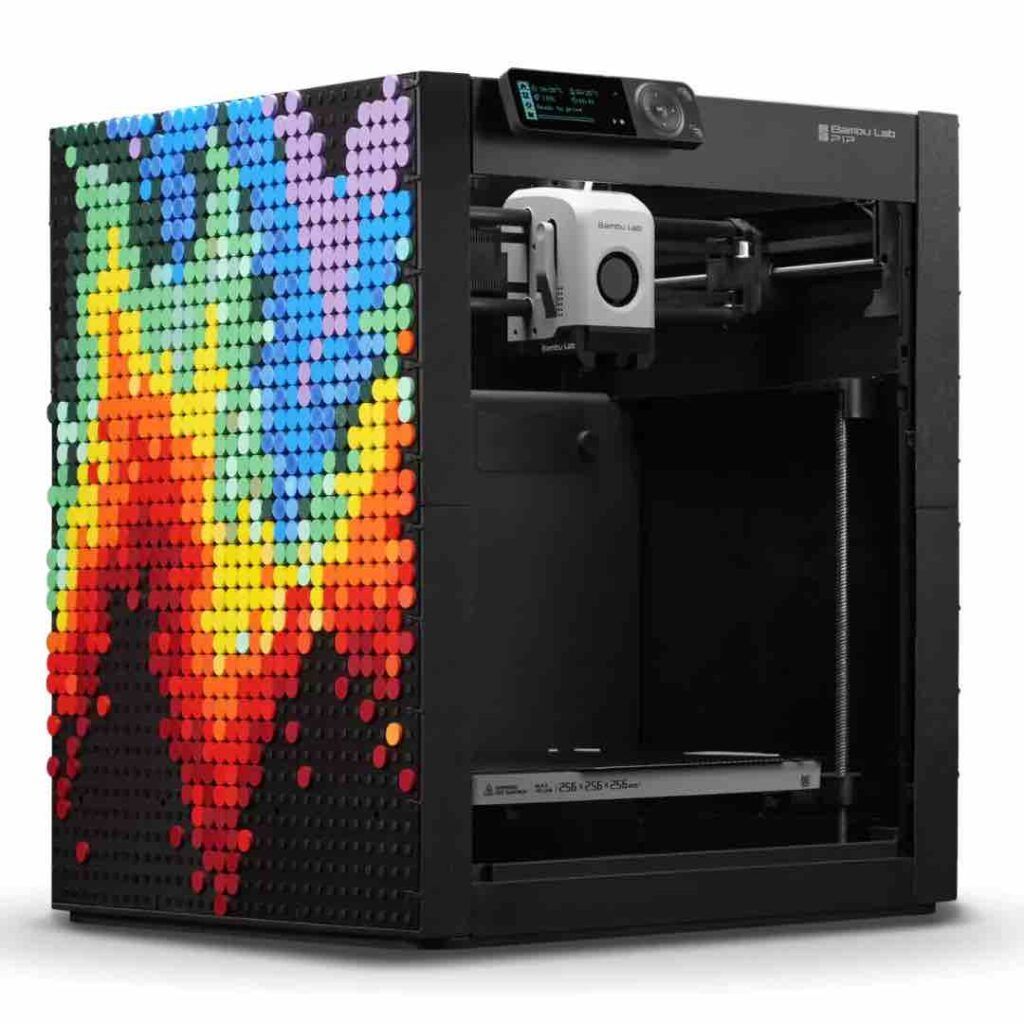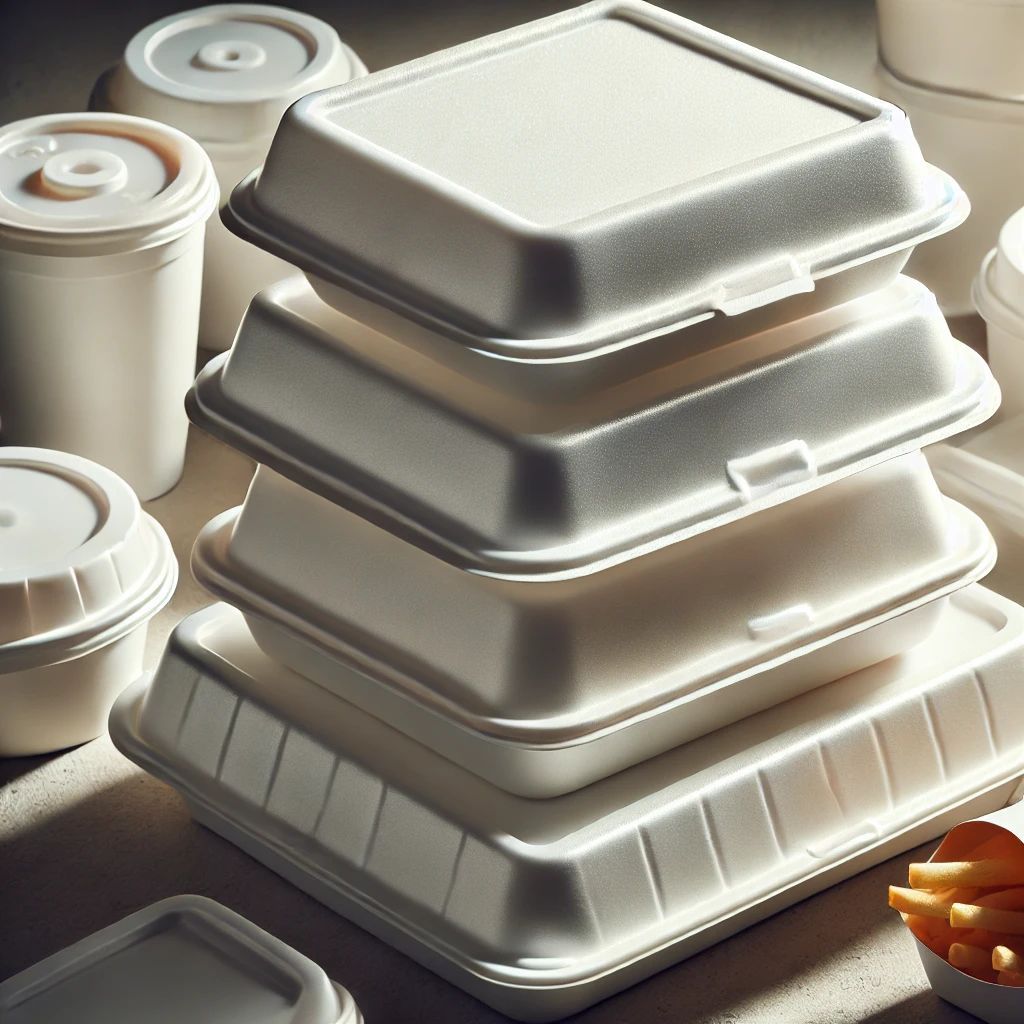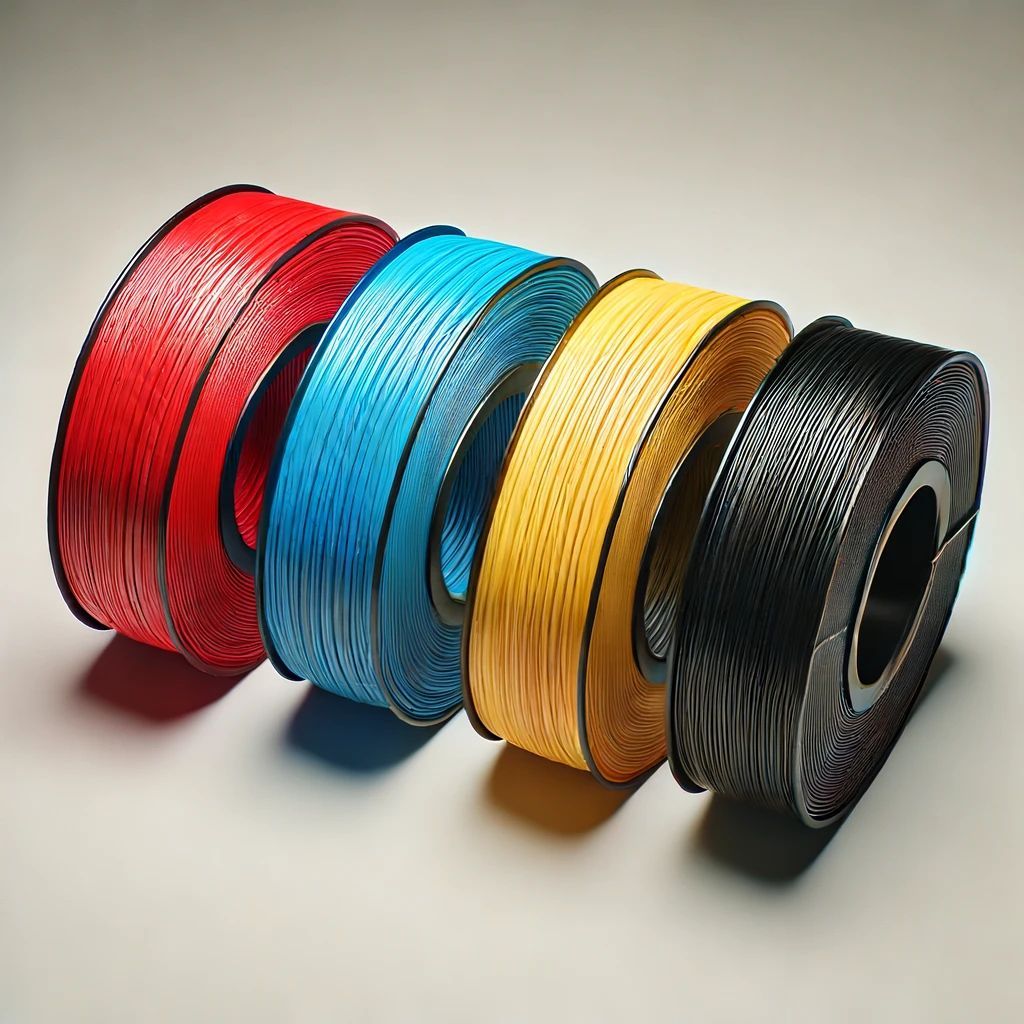Transformative Power of 3D-Printed Anodized Parts
A New Era of Advanced Manufacturing

The intersection of additive manufacturing and surface engineering has opened up groundbreaking possibilities across industries. Among the most promising advancements is the anodization of 3D-printed parts, particularly those that have been coated with aluminum. This process enhances the durability, corrosion resistance, and aesthetic appeal of 3D-printed components, unlocking new applications in the aerospace, medical, automotive, and consumer electronics industries. But why is anodization such a game-changer, and how does it elevate the performance of 3D-printed parts beyond their traditional limitations?
This article explores the benefits, technical insights, and real-world applications of 3D-printed anodized components, revealing why they are revolutionizing modern manufacturing.
Understanding Anodization in 3D Printing
What is Anodization?
Anodization is an electrochemical process that increases the thickness of the natural oxide layer on a metal surface, most commonly aluminum. This process enhances corrosion resistance, improves wear properties, and provides a better surface for dyeing or adhesion of additional coatings. In traditional manufacturing, anodization has been widely used to improve aluminum components, but its adoption in the realm of 3D printing has only recently gained momentum.
Why 3D-Printed Parts Need Anodization
Unlike CNC-machined aluminum, 3D-printed parts—especially those fabricated using SLA (Stereolithography) or SLS (Selective Laser Sintering)—lack inherent metal properties. However, when these prints are coated with a thin conductive layer of aluminum and subsequently anodized, they gain remarkable properties that bridge the gap between conventional machining and additive manufacturing. This means that designers can now fabricate complex geometries while still benefiting from the superior characteristics of anodized aluminum.
Benefits of 3D-Printed Anodized Parts
1. Enhanced Durability and Wear Resistance
The most compelling advantage of anodization is its ability to significantly strengthen a 3D-printed part. By converting the outer aluminum layer into a robust aluminum oxide surface, anodization makes the part far more resistant to physical wear and mechanical stress.
This is particularly crucial for applications that require high-performance materials capable of withstanding friction, pressure, or repetitive motion. Furthermore, anodization extends the lifespan of parts exposed to extreme environmental conditions, reducing maintenance costs and ensuring long-term performance in aerospace, automotive, and industrial applications.
2. Superior Corrosion Resistance
Unlike raw aluminum or untreated 3D-printed parts, anodized surfaces are virtually impervious to corrosion. The anodized layer forms a protective barrier that prevents oxidation and degradation over time.
This makes anodized 3D-printed parts ideal for outdoor applications, marine environments, and aerospace components that must endure extreme atmospheric conditions.
Anodization also ensures resistance against chemicals and UV exposure, preventing material deterioration even in the harshest settings, such as chemical processing plants, offshore structures, and high-humidity environments.
3. Aesthetic and Customization Potential
One of the most overlooked advantages of anodization is its ability to introduce color and texture variations into a part. Since the anodized layer is highly porous before sealing, dyes can be absorbed into the surface, allowing manufacturers to achieve a wide range of vibrant, fade-resistant colors. This is particularly beneficial for consumer electronics, custom jewelry, and automotive detailing where both function and form are equally important. Additionally, anodized surfaces can be given matte, glossy, or textured finishes, offering further design flexibility in branding and product differentiation.
4. Lightweight with High Strength-to-Weight Ratio
Anodized 3D-printed parts maintain a high strength-to-weight ratio, making them particularly useful in industries where weight reduction is critical, such as aerospace and automotive engineering.
Unlike solid metal counterparts, these components retain their structural integrity without the burden of excessive weight, optimizing fuel efficiency and material economy. In space and defense applications, where every gram matters, anodized lightweight parts provide an unparalleled combination of strength, durability, and manufacturability.
5. Improved Adhesion for Secondary Coatings
Many industries require additional coatings—such as PTFE (Teflon) or ceramic coatings—for specialized applications. Anodized surfaces provide a superior substrate for these coatings, ensuring stronger adhesion and prolonged lifespan.
This is particularly advantageous in medical applications where biocompatible coatings may be necessary for implants or surgical instruments. Moreover, the enhanced adhesion ensures that coatings remain intact under high stress, heat, and exposure to chemicals, making anodized parts ideal for industrial machinery and high-performance engineering applications.
6. Electrical and Thermal Insulation Properties
While raw aluminum is conductive, the aluminum oxide layer formed during anodization serves as an excellent insulator. This property is crucial in electronics manufacturing, where components must be both lightweight and electrically non-conductive.
Heat dissipation is also improved, making anodized 3D-printed parts ideal for thermal management applications in LED lighting, battery enclosures, and high-performance computing systems.
This insulation prevents electrical short circuits while ensuring that devices maintain optimal thermal efficiency, crucial for increasing the reliability and safety of advanced electronic systems.
Applications of Anodized 3D-Printed Parts
1. Aerospace Engineering
The aerospace industry demands materials that are lightweight, durable, and resistant to extreme temperatures and pressures. Anodized 3D-printed parts meet these criteria while allowing for the creation of intricate, optimized geometries that are impossible to achieve with traditional machining.
Components such as heat shields, brackets, and aerodynamic surfaces benefit from anodization’s corrosion resistance and structural integrity. Additionally, anodized parts are used in satellite structures, UAVs (unmanned aerial vehicles), and spacecraft due to their ability to withstand harsh extraterrestrial environments.
2. Medical and Biotech Industries
In the medical field, anodized 3D-printed parts play a crucial role in creating surgical tools, prosthetics, and implantable devices. The anodized layer enhances biocompatibility while offering a surface that resists bacterial adhesion. Additionally, anodized parts can be color-coded for easy identification in surgical environments.
Further applications include orthopedic implants, dental fixtures, and patient-specific biomedical devices that benefit from the hypoallergenic and antimicrobial properties of anodized surfaces.
3. Automotive and Motorsport Innovation
Weight reduction is a primary concern in automotive and motorsport engineering. Anodized 3D-printed parts provide a strong yet lightweight alternative to traditional machined components. Heat-resistant parts for engine compartments, aerodynamic winglets, and custom-designed brake caliper covers are just a few examples where anodized 3D-printed components excel.
Anodized 3D-printed parts are also used in EV (electric vehicle) battery enclosures, performance chassis reinforcements, and lightweight suspension components to enhance vehicle efficiency and handling.
4. Consumer Electronics and Luxury Goods
Anodized 3D-printed parts are becoming increasingly popular in consumer electronics, from smartphone casings to laptop frames.
Their resistance to scratching, aesthetic appeal, and ability to hold dyes make them an excellent choice for high-end luxury products, including watches, jewelry, and decorative hardware.
Additionally, anodized coatings provide enhanced fingerprint resistance and increased durability for frequently handled devices, making them a preferred choice for premium product design.
5. Industrial and Robotics Applications
Anodized components are widely used in robotics and industrial automation due to their mechanical durability and ability to withstand harsh working conditions.
Whether it's custom gears, brackets, or structural frames, anodized 3D-printed parts ensure long-term reliability and reduced maintenance costs.
Robotics applications also benefit from the lightweight and high-strength properties of anodized aluminum, which contributes to improved efficiency and performance in robotic arms, actuators, and automated assembly systems.

Step-by-Step Guide to Anodizing 3D-Printed Parts
This method mimics the anodizing process used for aluminum but applies it to 3D prints by creating a conductive aluminum-coated layer before anodization.
🛠️ Materials & Tools Needed
1️⃣ Preparing the Print:
- 3D Printed part (FDM, SLA, or MJF)
- Sandpaper (400 to 1000 grit)
- Isopropyl Alcohol (IPA) (90% or higher)
- Soft cloth or microfiber towel
2️⃣ Making the Part Conductive:
- Aluminum conductive coating spray OR DIY conductive paint (Graphite, silver, or copper-infused)
- Airbrush or soft brush (for even application)
- Hairdryer or heat gun (low setting)
3️⃣ Electroplating Aluminum Onto the Part:
- Aluminum sulfate (available online or at chemical suppliers)
- Aluminum anode (pure aluminum plate or foil)
- Power supply (0–12V DC, 3A)
- Plastic container (non-conductive)
- Distilled water
- Sulfuric acid (battery electrolyte – safer alternatives suggested below)
- Baking soda (for neutralizing acid spills)
- Safety gloves, goggles, and ventilation
4️⃣ Anodizing Process:
- Sulfuric acid or safer alternative (like diluted vinegar & hydrogen peroxide mix)
- Lead or aluminum cathode
- 6–12V DC power supply
- Dye for coloring (optional, for aesthetic finishes)
- Boiling distilled water (for sealing the anodized layer)
🔷 STEP 1: Prepare the 3D Print
- Sand the surface of the 3D print to remove layer lines and improve adhesion. Start with 400 grit and work up to 1000 grit for a smooth finish.
- Wash with Isopropyl Alcohol (IPA) to remove dust and oils. Let it dry completely.
🔷 STEP 2: Make the Surface Conductive
- Apply a conductive layer using aluminum conductive spray (best option) or a DIY alternative like graphite or silver paint.
- Use an airbrush for even application, or a soft brush for a manual method.
- Dry the part completely using a hairdryer or heat gun on low.
-
🔷 STEP 3: Electroplate Aluminum Onto the Part
- Prepare an aluminum plating bath:
- Mix Aluminum Sulfate (200g per liter of distilled water).
- Add a small amount of sulfuric acid (or use a safer alternative).
- Stir well until fully dissolved.
2. Connect the power supply:
- Attach the negative (-) lead to the 3D print (ensure a good connection).
- Attach the positive (+) lead to the aluminum anode.
3. Submerge the part in the plating bath and turn on power (6–12V DC).
- Plate for 30–60 minutes, checking periodically for even coverage.
- Rinse thoroughly in distilled water.
🔷 STEP 4: Anodizing the Aluminum-Coated Part
- Prepare the anodizing bath:
- Mix 1 part sulfuric acid with 3 parts distilled water.
- Alternative: Use a mix of vinegar (5%) and hydrogen peroxide (3%).
2. Connect the power supply:
- Negative (-) lead goes to an aluminum or lead cathode.
- Positive (+) lead goes to the 3D-printed part.
- Submerge the part in the anodizing bath.
- Turn on power at 6–12V DC for 1–2 hours.
- Check for a matte finish, which indicates successful anodization.
🔷 STEP 5: Dyeing & Sealing (Optional but Recommended)
- If dyeing, submerge the anodized part in fabric dye (mixed per package instructions) for 10 minutes.
- Seal the anodized layer by boiling in distilled water for 30 minutes.
✅ FINAL RESULT:
- A durable, anodized aluminum coating on your 3D-printed part.
- The part can now be dyed, sealed, or left with a natural anodized finish.












